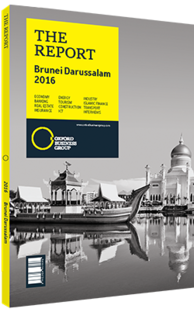Islamic bonds expand Brunei Darussalam's financial base
Brunei Darussalam made headlines in April 2016 with the announcement of several sukuk (Islamic bond) offerings ahead of the launch of a standalone stock exchange in the Sultanate. Efforts to expand the scope of the financial sector are aimed at ensuring a greater diversity of public and private sector financing, specifically in support of businesses and infrastructure projects. A roadmap of financial sector expansion is laid out in the Sultanate’s long-term national vision, Wawasan Brunei 2035. Launched in 2008, it targets an increase in financial services’ share of GDP from 5%in 2015 to at least 8% by 2035.
Short-Term Finance
In April 2016 the Monetary Authority of Brunei Darussalam (AMBD) issued two sukuk worth a combined $150m. The first, a $50m bond with a rental rate of 1.03%, has a one-year maturity, while the second offering, a $100m sukuk with a rental rate of 0.78%, will mature in July 2016. To date, the country has issued a total of 130 sukuk, with a combined $9.7bn in short-term offerings since 2006. The government’s stock of outstanding sukuk stood at $575m as of the end of April 2016. Given its relatively small size, the country accounts for a significant share of worldwide issuances, according to a March 2016 report from the International Islamic Financial Market. In the period from 2001 to 2015 Brunei Darussalam offered 119 short-term sukuk, equivalent to 2.32% of the global market by value. The Sultanate stands alongside Indonesia and Malaysia as a major issuer of Islamic financial instruments in the region and is poised to play a growing role in the issuance of sukuk in coming years, the report noted.
Financing For Development
Short-term sukuk have been a major contributor to the country’s development, and may become more important in an environment of increasing uncertainty in international markets. In the 2008-09 global financial crisis, for example, sukuk were seen as an attractive alternative for investors as they were less exposed to contagion from conventional banks. Islamic finance is already becoming increasingly important in the development of major infrastructure projects, according to a World Bank report on global financial development issued in September 2015. Sukuk are particularly well suited for infrastructure financing, as the instrument is based on investment in specific underlying assets or real economic activities. In practice, sukuk are often structured in a manner more similar to corporate bonds than project bonds, however, “they have the potential to be structured in ways akin to a project bond, where they can either bear the full risk of the project or stand alongside an equity financing tranche, depending on the risk appetite of institutional investors,” the World Bank said.
Sukuk could also have prospects for financing small and medium-sized enterprises further down the line. The report underscored the success of sukuk in funding a variety of major projects, including a 1-GW coal-fired power plant in Malaysia, with local utility Tenaga Nasional issuing a $1.1bn sukuk with a 27-year maturity to finance the facility’s construction. More recently, Cahya Mata Sarawak indicated that it was considering raising up to RM1bn ($247.5m) via sukuk in 2016 to finance construction of its portion of the 2083-km Trans-Borneo Highway.
Instruments for financing larger-scale infrastructure are also under consideration, with the AMDB announcing plans in June 2015 to issue long-term sukuk bonds as early as 2016. However, given that the two sukuk issued in April 2016 did not exceed one year maturities, the timing of such a move is unclear.
Future Moves
The creation of a stock market could give further impetus to sukuk issues. In March 2016 international media reported that the AMBD had enlisted a team to review the framework for the bourse. Once launched, the bourse should focus on equities trading before adding bonds and sukuk at a later stage, local media reported in April 2016.
You have reached the limit of premium articles you can view for free.
Choose from the options below to purchase print or digital editions of our Reports. You can also purchase a website subscription giving you unlimited access to all of our Reports online for 12 months.
If you have already purchased this Report or have a website subscription, please login to continue.

